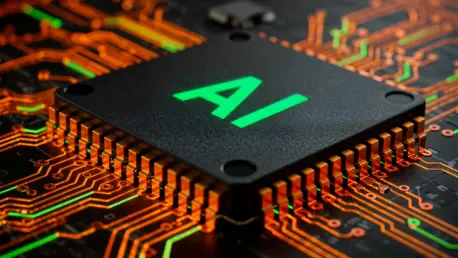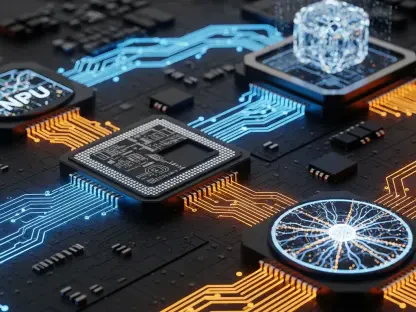In an era where artificial intelligence is pushing the boundaries of computational demand, the quest for more powerful and efficient hardware accelerators has never been more critical, especially as industries from healthcare to finance rely on AI for transformative solutions. The unveiling of Rebellions’ latest innovation, the REBEL-Quad, marks a significant moment in this journey. This cutting-edge AI accelerator promises to tackle the escalating needs of AI workloads with a unique blend of advanced technologies. Boasting an impressive 144GB of HBM3E memory across four memory sites and leveraging the Universal Chiplet Interconnect Express (UCIe) standard for chiplet connectivity, this hardware stands as a potential game-changer. Built with Samsung SF4X and CoWoS-S packaging, it integrates four compute ASICs and four HBM3E stacks into a single package. This sophisticated design, showcased on a dual PCIe Gen5 x16 interface card, hints at a new direction for AI hardware, sparking curiosity about whether it can truly redefine acceleration capabilities in a competitive landscape.
Pioneering Chiplet Connectivity with UCIe
The adoption of UCIe technology in the REBEL-Quad represents a bold step forward in silicon design, setting it apart from many competitors in the AI hardware space. Unlike traditional monolithic chip architectures, the use of UCIe enables high-bandwidth connectivity between multiple chiplets, allowing for a modular approach that can enhance performance and scalability. This standard, though often an internal detail not publicly emphasized by most companies, has been proudly highlighted by Rebellions as a cornerstone of their design philosophy. The integration of four distinct sets of silicon into a cohesive package demonstrates a remarkable feat of engineering, showcasing how UCIe can facilitate complex multi-chiplet architectures. Moreover, the practical implementation of this technology in a functional product underlines its potential to become a widely adopted standard in the industry. The significance of this achievement lies not just in the technical specs but in proving that such advanced interconnects can work seamlessly in real-world applications, paving the way for future innovations in AI hardware design.
Demonstrating Real-World AI Performance
The true test of any AI accelerator lies in its ability to deliver under real-world conditions, and the REBEL-Quad has proven its mettle through a compelling live demonstration that captured industry attention. During the showcase, the hardware ran the Llama 3.3 70B model on a development board, achieving an impressive output speed of 35.5 milliseconds per token—a clear indicator of its capability to handle intensive AI workloads with efficiency. This performance sets a benchmark in a field where many promising concepts fail to transition from theoretical designs to working silicon. While the choice to align with PCIe Gen5 rather than the emerging Gen6 standard raises questions about future-proofing, the demonstrated functionality speaks volumes about Rebellions’ commitment to delivering tangible results. Reflecting on this milestone, it’s evident that the successful execution and public validation of such technology marked a pivotal moment for AI hardware. Looking ahead, the focus should shift to how such innovations can be scaled and adapted to meet evolving industry standards and demands over the coming years.









